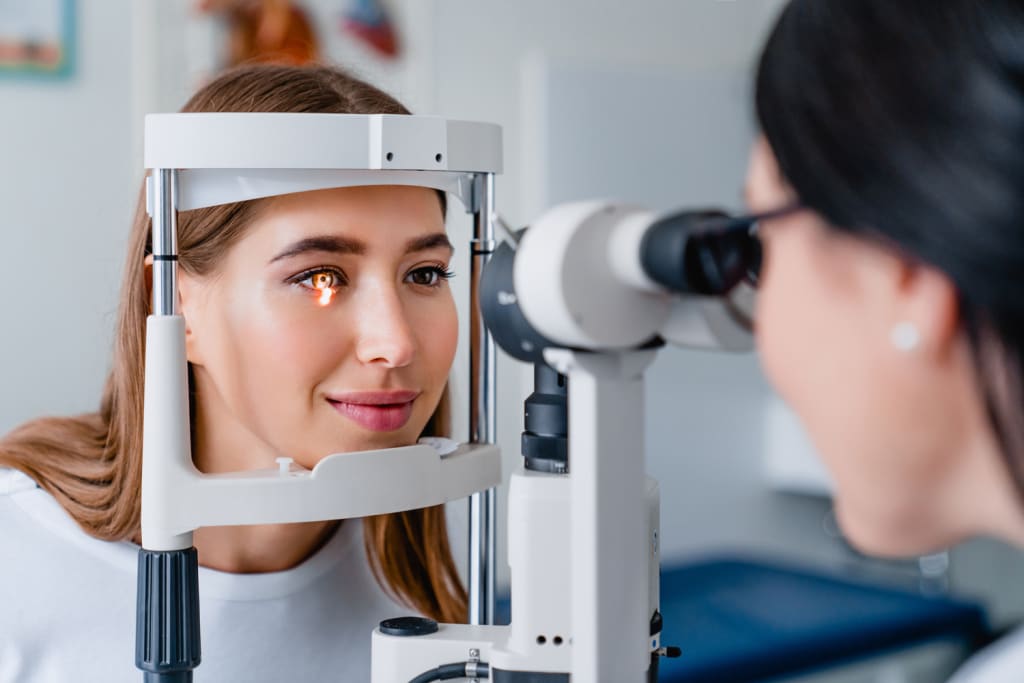Content warning
This story may contain sensitive material or discuss topics that some readers may find distressing. Reader discretion is advised. The views and opinions expressed in this story are those of the author and do not necessarily reflect the official policy or position of Vocal.
United States Ophthalmic Market: A Decade of Robust Expansion and Innovation Market
United States Ophthalmic Market

Changing Demographics Drive Increased Demand for Eye Care
As the American population ages, more people are developing eye diseases typically associated with aging such as cataracts, glaucoma, age-related macular degeneration and diabetic retinopathy. According to the National Eye Institute, the number of Americans aged 40 and older will grow to over 200 million by 2050, with those aged 65 and older more than doubling to over 88 million. This demographic shift is causing demand for ophthalmic services and products to increase substantially.
New Treatment Options Fuel Market Growth
Significant technological advancements have emerged in recent years for treating eye diseases. Cataract surgery has advanced from being a highly invasive procedure to same-day outpatient surgery using sophisticated phacoemulsification techniques. For glaucoma, new drug-eluting micro-stents provide an alternative to eye drops that many find inconvenient. Gene therapy is showing promise for inherited retinal diseases like retinitis pigmentosa that currently have no treatment. These new options are driving more patients to seek care and allowing ophthalmologists to better manage even very advanced cases.
Laser, Phaco and IOL Manufacturers Thrive
Leading the growth in the United States Ophthalmic market are manufacturers of laser equipment, phacoemulsification devices and intraocular lenses (IOLs). Alcon, the global leader in surgical equipment and vision care products, generated over $8 billion in annual revenue in 2021, up nearly 30% from five years prior. Bausch + Lomb, Johnson & Johnson Vision and Abbot Medical Optics are other major players continuously introducing new IOL materials, aspheric designs and presbyopia-correcting options. Lasers from Zeiss, Lumenis and OD-OS are being utilized for an ever-expanding array of retinal procedures and refractive surgeries.
Government Support Bolsters Non-Profit Research
Government funding for vision research has risen substantially in recent years through the National Eye Institute (NEI) budget. In 2021 the NEI received $848 million compared to $710 million in 2016. These research dollars flow to academic centers, driven by scientific breakthroughs such as the identification of more than 200 genes associated with eye disease. The NEI intramural program and grants to outside researchers are driving clinical trials of new genetic therapies that aim to halt or even reverse vision loss. Promising avenues include optogenetics to restore sight by manipulating neural pathways and implanting miniaturized, wireless smart artificial retinas.
While ophthalmology continues to lead the field of eye care, optometry practices are growing at an impressive rate across the U.S. According to the American Optometric Association, the profession's economic impact totals over $11 billion annually with over 40,000 practicing doctors of optometry. In addition to comprehensive eye exams, many optometrists now perform minor procedures such as punctal plug treatments for dry eye, foreign body removals and administer therapeutic medications by injection. Optometry groups like Vision Source and National Vision have hundreds of locations with expanded service offerings including optical shops. Optometrists play a pivotal role in detecting eye disease early and co-managing chronic diseases in partnership with ophthalmologists.
Ophthalmic Pharmaceuticals See Rising Revenues
Sales are strong for prescription eye drop brands that treat glaucoma, dry eye and other common conditions. Market leader Alcon pulled in $2.1 billion from glaucoma drugs alone in 2021. generics have made inroads in this therapeutic class as well, with Akorn, Sandoz and Mylan competing on price. Chronic dry eye is benefiting from new clinical indications for anti-inflammatories like Restasis and Cequa after years of research into the underlying pathophysiology and management of the disease. Prescription omega-3 supplements are also performing well for dry eye. Allergan Aesthetics experienced 38% growth in its vitamin A acid line for meibomian gland dysfunction management.
Overall, With an aging population and major technological and treatment advances, the United States ophthalmic market is poised for continued strong growth well into the future. All segments, including surgical and laser equipment manufacturing, pharmaceuticals, optometry practice management and non-profit vision research are capitalizing on these key market drivers. Greater public awareness campaigns will further boost detection and management of major blinding diseases. Collaboration across specialties and further innovations promise even brighter long-term prospects.
Get more insights on this topic: https://www.zupyak.com/p/4200788/t/united-states-ophthalmic-market-the-us-ophthalmic-industry-registers-robust-growth
About the Creator
Enjoyed the story? Support the Creator.
Subscribe for free to receive all their stories in your feed. You could also pledge your support or give them a one-off tip, letting them know you appreciate their work.





Comments
There are no comments for this story
Be the first to respond and start the conversation.